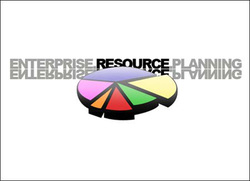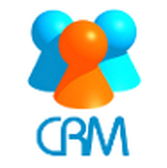
Knowledge management system is higher level information system that uses information from lower level information system to be able to create a somewhat like a forecast of pattern or behavior. It studies and analyzes matching tastes and preferences, likes and predilections.
In social networks, you may have not noticed but the ads situated on ones page is based on his demographics and likes. For example, one located in the Philippines who enters www.yahoo.com will be redirected to www.yahoo.com.ph which contains ads that are from or can be located in the Philippines. And in the social network sites, notice the sidebar ads, they are based on ones age, likes, and locale. This is a simple work of knowledge management. Also falling under knowledge management is the predictive and prescriptive semantics. In comparison, sales can provide results of buying patterns such as lean months, demographics of customers, repeat customers, frequent returns or defects, and others.
Knowledge management proves to be a cornerstone in emerging business strategies with companies increasingly turning to software vendors to enhance their efficiency in industries.

May it be a micro-scale of large-scale business, all need information system management. May it be a simple Microsoft Excel inventory or a vendor made payroll system.
Truth be told, Enterprise Information System is not fully implemented by most organizations using it. Three components of EIS: Enterprise Resource Planning, Supply Chain Management, and Customer Relations Management. Either two of these components are only used or only one. These three components promises to make entrepreneurs and companies achieve their growth. And like all other information systems, the EIS is not exempted from the high cost it reckoned. Rigorous time in planning is also needed to be able to implement EIS. This system involves three layers of data sources, the customers, the suppliers, and the data within the organization also.
Backtracking the previous topics, this system is vital in the strategic placement for organizations gearing towards their competitive edge. And also like any other systems, there are setbacks and downfalls of this system. One is cost, obviously. Second is training and turnover. Enduser should know how to use it, and with updates and upgrades, continuing education and training is needed also. Third is user-dependent. This is somehow related to the previous item. No matter how good the system is, it is fully dependent on the users.
Looking at the brighter side, EIS also has lots of advantages like ease in business transactions and processes. Another one is that it helps provide timely delivery of information and reports. Information is in order and easier to be understood for further analysis. With this, management and executives can precisely make decisions.
Weighing the two sides of the coin and with the willingness and ability, it is still better to venture in investing resources to Enterprise Information System. Again, to put the organization in a competitive edge.

Some organizations tend to forget a very important factor in putting up together an effective information system that is the customer relationship management system. This CRM system is important because customers are the sources of one of the sources of data. With this system, data about customer are organized, tracked and automated for the organizations key aspects such as sales. This would build profiles of the customers segments and patronizing pattern resulting to forecasts. This would also include keep records for after sales support such as returned products and repairs. The CRM system would also point out loyal customers. On the side of the organization, support staff of the purchase, for example, would be traced and would indicate to whom customer count will be credited to – this is for companies who involve customer service count for their performance evaluation and incentives. This system is only a part and parcel of a package of systems that would make an organization achieve its goals and objectives.
Going back to basics, the choice of CRM systems depend on the nature and size of the organization or company. Same facts to follow, pre-made systems are less expensive than custom-made systems but lesser control and personalization. Making the right choice of a suitable CRM system, together with the other systems, ones organization will be able to happily serve their delighted clientele.

In today’s busy world, multitasking becomes a normal habit. People engage themselves in different tasks and errands – domestic responsibilities, work, socials, and more work. More and more people feel the need for continuing education even with their present undertakings. This concern is addressed by e-learning, distance learning, and telecommuting.
E-learning gives opportunities for students to engage in their usual undertakings and just require them to meet at least once in the school probably for examination or graduation. This is basically learning via the internet. A usual classroom setup can engage in e-learning. This supports conventional teaching methods. Another concept of e-learning is with the presence of a virtual classroom, students learn via the internet may it be by web conference or video conferences. As with distance learning, the idea here is a student is enrolled but cannot all the time be present in school premises. The early answer given by distance learning is the sending off of learning materials such as AV materials as part of their modules. This method evolved to just using the internet to communicate and exchange notes and files. Although there are many ways of doing distance learning, it may, at least once, or may not even require the presence of the student to school.
In both cases, web-enabled systems make knowledge accessible to those who need it, when they need it, any time, anywhere. E-learning and distance learning can be useful both as an environment for facilitating learning at schools and as an environment for efficient and effective corporate training.
Telecommuting is the answer for people who would want to work but have geographical constraints. This answers a big portion of unemployment in which our country now strongly ventures into business process outsourcing otherwise known as “offshore”. With telecommuting, people work together (not physically) via a virtual workplace. They meet and perform their own duties as a normal workplace runs, just which, they are not really there; they are far from each others, even oceans apart.




 RSS Feed
RSS Feed